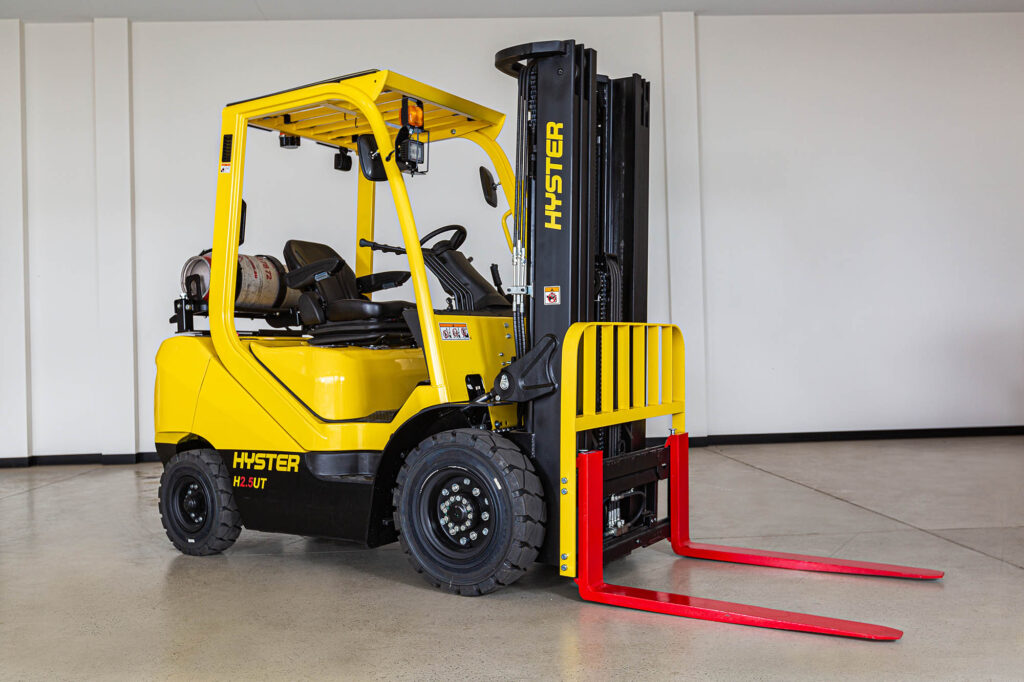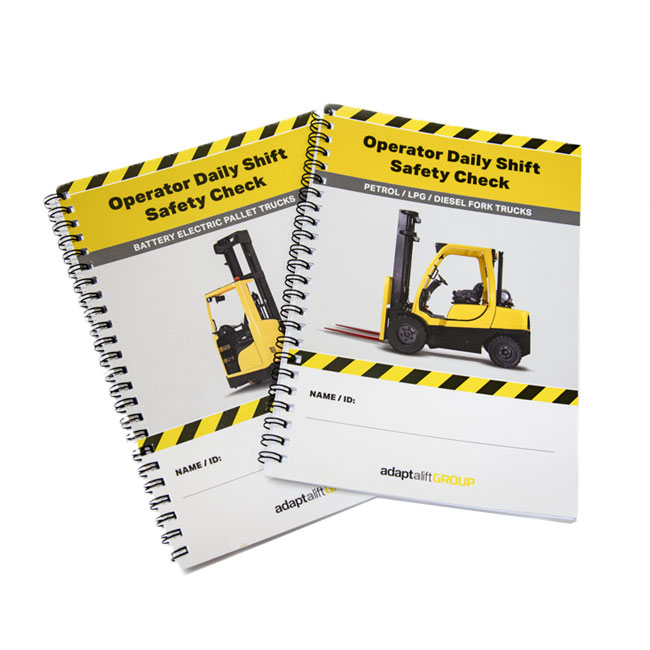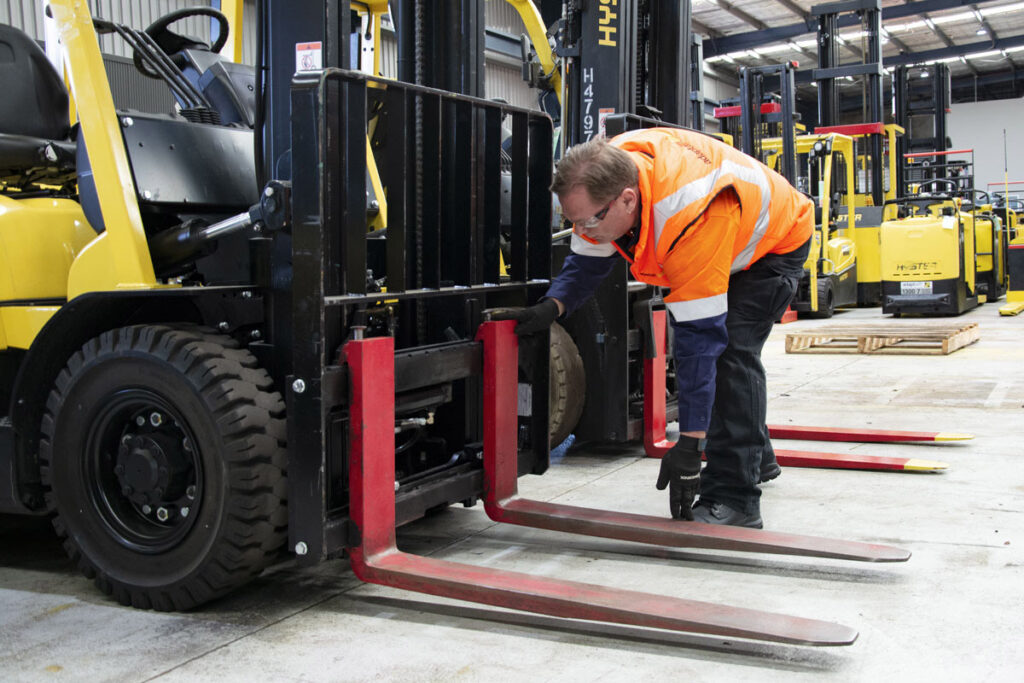When it comes to operating a forklift, safety should always be the top priority.
One crucial way of ensuring forklift safety is regularly completing pre-operational checks.
But what exactly is a forklift pre-start check and why is it important?
In this post we will delve into the essential elements of pre-start checks for both battery electric and combustion engine forklifts, emphasising the significance of this practice in promoting safety and efficiency.

Why Pre-Start Checks Matter
Pre-start checks are an indispensable part of forklift maintenance and operations. They serve several critical purposes, including:
- Safety Assurance: These checks help identify potential issues or malfunctions in the forklift, allowing operators to address them before they become safety hazards.
- Compliance: Regular pre-start checks ensure compliance with safety regulations and standards, such as those set by Safe Work Australia.
- Preventive Maintenance: Detecting and addressing problems early can extend the lifespan of the forklift and reduce repair costs.
- Efficiency: A well-maintained forklift operates more efficiently, leading to improved productivity.
- Checking lubrication points: Depending on workloads, this can be done daily or weekly.
Safe Work Australia recommends the regularity of these checks, which may vary depending on the type of forklift and its usage.
When conducting pre-operational checks, if items are found to be unsafe, worn or damaged the unit is to be tagged out and reported to the supervisor for repairs.
The forklift should not be allowed to return to service until all defects have been fixed.
Safety systems must be operational before use.

Combustion Engine Pre-Start Checks
Combustion engine forklifts, including those powered by LPG, diesel, and petrol require specific pre-start checks. Here are the essential steps to be taken:
Before Starting the Engine
- Check water, engine & hydraulic oil, and fuel levels: Ensuring proper fluid levels is crucial for the forklift’s smooth operation.
- Check tires for wear or damage and inflation: Properly inflated and undamaged tires ensure stability and safe operation.
- Check hydraulic hoses, hoist chains, and fork tines: Any issues with these components can affect lifting capacity and safety.
- Check for any damage to body, frame and panels: Identifying structural damage is vital to prevent accidents.
- Hour meter reading: Keeping track of usage hours helps with scheduling maintenance and servicing.
After Starting the Engine
- Check the operation of the park and foot brakes: Functioning brakes are essential for safety during operation.
- Check the operation of the mast and hydraulic controls: Proper control ensures safe load handling.
- Check the operation of the steering mechanism: A well-functioning steering mechanism is crucial for manoeuvrability.
- Check the operation of the horn, reversing buzzer, and lights: These are essential safety features.
- Check that all instruments are functioning: Ensuring all indicators work correctly helps monitor the forklift’s status.
- Report if the engine has any leaks or is making unusual noises: Any irregularities should be promptly addressed.
- Move the fork truck and inspect the floor for signs of oil leaks from the engine or hydraulic system: Detecting leaks early prevents environmental contamination and hazards.
Electric Engine Pre-Start Checks
For battery electric forklifts, pre-start checks are equally crucial. Here are the steps involved:
Before Starting the Engine
- Check electrolyte level in the battery: Maintaining proper battery levels is vital for uninterrupted operation. Check your forklifts operator manual for specific information.
- Check tires for wear, damage, or string: Safe tires ensure stability and load handling.
- Check fork tines for damage: Damaged tines can lead to unsafe load handling.
- Check for any damage to body, frame, and panels: Identifying structural damage is essential.
- Hour meter reading: Tracking usage hours helps with maintenance scheduling.
After Starting the Engine
- Check the operation of the park brake and pedal brakes: Effective brakes are crucial for safety.
- Check the operation of the hydraulic controls: Proper control is essential for safe load handling.
- Check the operation of the steering mechanism: A well-functioning steering mechanism is vital.
- Check the operation of the horn: The horn is a safety feature.
- Check that the battery discharge indicator shows sufficient charge: Ensuring adequate charge prevents unexpected downtime. Check operator’s manual for specific information.
- Check for unusual noises from the electric motors or hydraulic pumps: Identifying issues early helps prevent breakdowns.

How Should Forklift Operators be Trained to Conduct Pre-Start Checks?
Proper training is paramount in ensuring that forklift operators can perform pre-start checks effectively. Operators should be educated on the importance of these checks and provided with comprehensive guidelines for conducting them. Following a checklist, like the one provided by Adaptalift Store, can help ensure that no crucial steps are missed, and the checks are conducted in the correct order.
By adhering to these practices, forklift operators can contribute to a safer and more productive workplace, ensuring the well-being of both personnel and equipment. Regular inspections, as well as adherence to guidelines and regulations, are key to a successful and incident-free forklift operation.
Remember, safety starts with you, and a thorough pre-start check is your first line of defence in the world of forklift operation.
